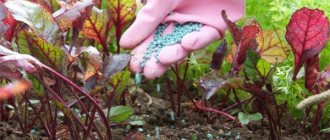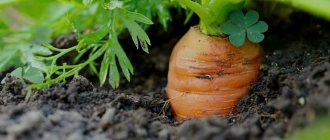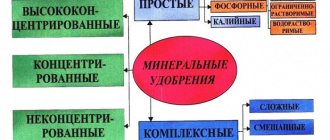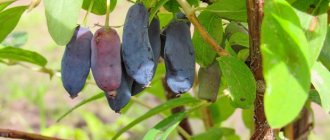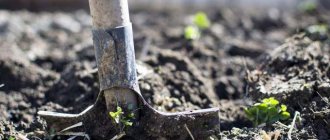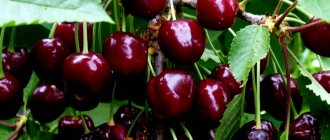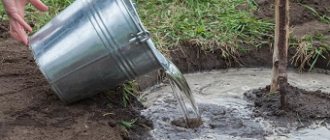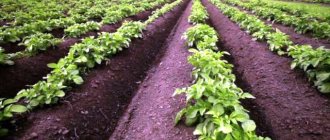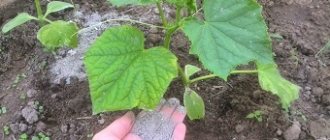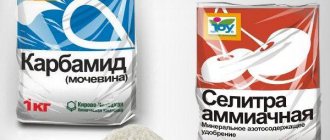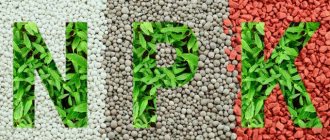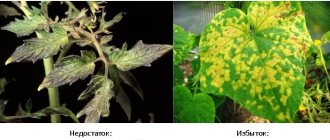To enjoy juicy fruits next season, you need to prepare the soil for wintering. This is facilitated by fertilizing the soil in the fall. It is sometimes difficult for novice agronomists to understand the wide range of mineral and organic products. To help lovers of homemade vegetables and fruits - an article devoted to an overview of fertilizers and methods of their use.
Why fertilize in the fall?
Any application of fertilizers to the soil has the goal of restoring or increasing its fertility. Obviously, vegetables that have been growing in the garden all season have drawn a lot of nutrients from the soil, so after harvesting (harvesting the crop), you need to return some of them to the ground, and this should be done in the fall, not in the spring.
Accordingly, the rate of fertilizer application is also adjusted depending on what plants grew in the garden before and what they were fertilized with.
Sowing green manure
During the spring-summer season, crops growing in beds deplete the soil of all its nutrients. In order for the land to become fertile again, green manure plants are planted. Their main properties:
- improve the composition and structure of the soil;
- protect the earth from adverse environmental conditions;
- promote the formation of humus;
- make the soil loose and soft, improve its breathability.
Green manures are:
- winter rape;
- phacelia;
- mustard;
- rapeseed;
- sweet clover;
- clover;
- rye;
- lupine;
- alfalfa.
Plants need to be sown in the fall, 1.5 months before the onset of frost. After they grow and bloom, they are embedded in the soil.
Fertilizer application time
At the end of the harvest, you should begin to saturate the soil with useful elements.
You need to start fertilizing at the end of August. All work must be completed by October 15. In the second half of this month, the heavy rainy season begins. According to the rules of soil cultivation, it is not recommended to loosen soil that is wet more than 10 cm in depth. This leads to disruption of its structure.
Due to the fact that the growing season ends in mid-autumn, the use of fertilizers at this time is not effective. All garden crops enter a dormant stage and are unable to fully absorb useful elements.
Recommended dosage
The composition of the soil determines the type of fertilizer and its rate. For example, soil with a lot of sand requires more fertilizing than soil with clay. This is due to the fact that useful elements are washed out more slowly from heavy soils.
Autumn fertilizers for the garden
In the fall, the harvest is usually already harvested. Of course, there are winter crops. For example, when planting winter garlic, the soil needs to be prepared in late August - early September. To do this, you can add 10 kg of humus, 1 cup of chalk, 2 tbsp for digging per 1 sq.m of area. potassium sulfate and 1 tbsp. superphosphate.
- Planting garlic before winter - all the subtleties of planting with cloves
We tell you how to properly plant garlic in the fall.
But winter onions and garlic are unlikely to take over your entire garden. Therefore, the freed soil can be properly fertilized without fear of burning the tender roots of the plants. What fertilizers does the garden need in the fall?
Organic fertilizers for the garden
Rotted manure or compost is applied once every 3-4 years for digging at the rate of 3-4 kg per 1 sq.m.
Bird droppings are a more concentrated fertilizer. Therefore, it is applied at the rate of 2 kg per 1 sq.m of bed.
Soil fertilized with ash will especially appeal to cabbage in the spring.
This fertilizer is also applied when preparing a site for potatoes, tomatoes, eggplants, peppers, radishes, dill, carrots, parsley, peas, beans, beets, and watercress. If you add ash every few years, you can use about 1 kg per 1 sq.m. But if you feed the plants more often, 1 cup per 1 sq.m. will be enough for most of your green pets. Not only is ash an excellent source of minerals, but it also reduces soil acidity.
- Ash - what kind of fertilizer is it and how to use it correctly
Ash is not just a fireproof residue after combustion, but also a valuable microfertilizer. Our material contains everything about how ash is useful for plants, how to use ash as a fertilizer, how to dilute ash for feeding, what spraying with an ash solution is...
And in the case of onions and garlic, ash can become a prophylactic agent that protects against root rot. To do this, you can add up to 2 cups of ash per 1 sq.m. during digging in the fall.
Green manure as autumn fertilizer
Green manure is a plant with a powerful root system and rapidly growing green mass. They can be sown after harvesting and then mowed and incorporated into the soil. During the decomposition process, such plants enrich the soil with nutrients.
Legumes can be used as green manure (field peas, lentils, clover, annual lupine, spring vetch, alfalfa, sweet clover); cereals (spring oats and barley, millet, winter varieties of rye and wheat). Phacelia, sunflower, buckwheat, amaranth, and marigold have proven themselves well as green manures.
- What green manures can be sown in the fall after harvesting?
We'll tell you how to improve the soil by planting green manure plants in the fall.
Mineral autumn fertilizers for the garden
The most popular autumn fertilizer is superphosphate , which, due to its not too rapid decomposition, is excellent for applying to the soil during the rainiest season. On average, ordinary superphosphate is applied at the rate of 40-50 g per 1 sq.m., the rate of application of double superphosphate is 20-30 g per 1 sq.m.
A classic autumn fertilizer is also potassium chloride . Before using it, it is important to carefully study the instructions in order to correctly calculate the dosage. But on average they use about 10-20 g of fertilizer per 1 sq.m. When working with potassium chloride, it is recommended to wear goggles and a respirator.
Potassium sulfate does not contain chlorine, which is harmful to many plants. In autumn, granules are usually embedded in the soil to a depth of 10-20 cm. Application rates depend on the plants that will subsequently grow in this area. On average, about 15 g per 1 sq.m is applied for cucumbers, 20 g for tomatoes, 25 g for cabbage and turnips, and 35 g for potatoes.
Whatever fertilizer you choose for your garden, vegetable garden, flower bed or lawn, it is important to remember that the harvest will not be a joy if it brings harm instead of benefit. But, as you know, the amount of certain elements in seemingly similar fertilizers from different manufacturers may differ slightly. And even organic fertilizing in significant quantities can contribute to the accumulation of nitrates in the crop. An eloquent example of this is manure or chicken droppings. Therefore, when applying any autumn fertilizers to the soil, it is important to check the instructions or recommendations of experienced specialists, and in no case exceed the dosage.
Preparing the soil for fertilization
Before fertilizing the soil in the fall, three conditions must be met:
- Harvest the entire crop so that minerals do not accumulate in the fruit.
- Remove tops with rhizomes and weeds from the site. It is better to burn them and use them to prepare an ash solution.
- Water the soil well. This is especially true for berry bushes, whose root system is located in the surface layer and additional watering before winter will not harm them.
Autumn fertilizers take longer to dissolve because the weather may be dry in the fall, and without water the plants will not receive nutrients. Therefore, the soil is spilled to the depth of the roots.
For raspberries it is 50–60 cm, for fruit trees up to 2 meters. It will take a lot of water, but the harvest for next year is guaranteed.
Weeds are removed so that they do not take away nutrients from the soil. They can be mowed before winter. Leave the roots to rot, and use the greens to mulch berry bushes. This will retain moisture in the soil and protect the soil from erosion.
Organic matter for digging
The properties of organic fertilizers - restoring the amount of humus and improving the biochemical composition of the soil - have been known for a long time. Ever since the times of Ancient Egypt, when people waited with hope for the Nile to flood and only then began cultivating the land and planting crops. In the desert sandy soil there was only enough organic matter for one season, as rains quickly washed away the nutrients and they sank into deeper layers.
It’s easier with chernozems, loams and sandstones: useful substances stay in them longer, especially long-lasting organic substances. How the land is fertilized in the fall and the effect of fertilizing on plants.
Wood ash
Ash fertilizers are applied to perennial plants during digging in the fall. In the autumn, it is dangerous to apply fertilizers that contain nitrogen, as this can give the plants an impetus for new shoot growth. Before winter, the young branches will not have time to become woody and will freeze.
As a result, a fungal or bacterial infection will get into the wounds, after which the plant - tree or shrub - will have to be treated. The ash contains potassium, phosphorus and microelements, which are necessary for vegetation for immunity. There is no nitrogen in the ash - it all evaporates when plant residues and wood are burned.
The ash solution is made 6 - 7 days before the intended application, so that the nutrients pass into the water. In this form they are better absorbed by the roots. You need to take 300 g of ash per bucket of water.
How to properly fertilize fruit trees:
- Dig a trench 15–20 cm deep around a bush or tree.
- Sprinkle the soil well - up to 200 liters for each mature tree.
- Pour the ash solution into the recess evenly.
- Fill the trench with soil.
Typically, fruit trees are fertilized after pruning, as are raspberry, gooseberry, and currant bushes. If you use ash, then autumn liming of the soil is not required. Ash has an alkaline reaction due to the calcium it contains, so the simultaneous use of lime and ash can lead to severe alkalization of the soil. This threatens plants with poor absorption of phosphorus and iron.
Bone flour
Long-lasting organic fertilizer made from animal residues takes a long time to decompose in the soil.
It is customary to use bone meal once every 3 years. This is enough for the plants to be provided with phosphorus and calcium. Potassium fertilizers are added along with bone meal, since these substances interact well.
And applying nitrogen fertilizers in the fall will be a waste of money, because nitrogen quickly decomposes and is poorly retained in the soil. It is useless to bring it into an empty garden bed, and it is dangerous under perennials. This fertilizer is left for the spring, when active growth of greenery and shoots begins.
Dry substance or extract is used for embedding into the ground. The quantity is calculated based on the type: steamed, concentrated or regular. The highest percentage of phosphorus is 35% in low-fat concentrated bone meal. Fertilizers containing phosphorus are the most useful fertilizers used to fertilize the soil in the fall. When to apply autumn fertilizers has already been said: after harvesting, so as not to leave all the work for August and September.
Manure
It’s an expensive pleasure to use to fertilize the soil in winter. But if the farm has cattle or birds, then feeding the plants in the fall with a liquid infusion will benefit the future harvest.
Manure contains nitrogen and potassium, microelements. There are also negative sides:
- the presence of weed seeds that will germinate in the spring;
- Parasites live in manure and can infect the soil with larvae.
It is better to make compost from manure. After reheating, all negative aspects disappear. The ripening process of compost is long - from 9 to 12 months, but it is a valuable nutrient.
Green manure or how to fertilize the soil in the fall if there is no manure
Green manure is much cheaper to farm, and its nutrient content is not inferior to manure. If the question is what fertilizer to apply in the fall when digging for potatoes, then you can simply sow white mustard in the garden bed in August, wait until it grows 15–20 cm and mow it. They practice a method in which green manure is not cut off, but left in the area under the snow. Over the winter, the greens lie down and in the spring they can be dug up when planting potatoes.
There is also a method for fertilizing the soil without manure: cut off the green manure and take it to another bed. There will be roots in the soil that will decompose over the winter. At the same time, they will leave channels in the ground through which water and air will flow. There is no need to loosen or dig the soil.
How to fertilize the soil in the fall at your summer cottage:
- mustard;
- cereals - rye, oats, barley;
- lupine;
- clover;
- legumes - peas, beans.
It is important to ensure that green manure does not have time to bloom. After flowering, their nutrient content drops sharply, so it is necessary to embed them in the ground before branching begins.
Mineral fertilizers
Fertilizers are inorganic compounds containing microelements valuable for garden crops. Nitrogen, for example, accelerates the maturation of plants. Phosphorus increases resistance to diseases and improves the condition of the root system. Potassium increases the concentration of sugar and vitamins, and also prevents premature spoilage of plants.
In addition to the listed positive aspects, long-term use of mineral fertilizers has a number of disadvantages:
- Due to the accumulation of phosphorus and nitrogen in groundwater, water bodies become polluted.
- After prolonged use of fertilizers, the soil becomes compacted.
- The soil is saturated with toxins and heavy metals - cadmium, strontium and zinc.
Applying phosphorus fertilizers in the fall before digging
Phosphorus is part of organic substances. The addition of phosphorus to the soil causes changes in the redox potential and increases the restorative properties of plant tissues. Phosphorus accelerates plant development. A sufficient supply of phosphorus not only significantly increases the formation of flowers, but also improves their quality. High phosphorus content helps plants adapt to low temperatures. However, excess phosphorus leads to its insignificant use and premature aging of plants. Phosphorus fertilizers are applied in the fall before digging. The older the plant, the deeper the fertilizer needs to be applied, avoiding damage to the roots.
How to Apply Fresh Manure to the Ground
Applying manure is not as easy as it might seem. In order not to harm plants or the earth, you need to follow certain rules.
- Fresh manure can be applied to the soil only in the fall, because during its initial decomposition a lot of heat and gases are released, which can be harmful to the root system of crops. In spring and summer, you can only add diluted slurry, humus, and infusions prepared from manure.
- Depending on the type of manure, its concentration applied to the soil or under plants can vary greatly!
If the manure contains straw or other additional substances, its decomposition always slows down!
- Rotted manure is always used as fertilizer for cultivated plants. It contains chemicals in a simple form and is therefore absorbed faster.
- When applying manure to the ground, you should make sure that it does not get on the leaves, stems, or shoots of plants, because this will lead to their death.
- Manure is always applied only for digging. Infusion, humus and other solutions can be used as fertilizing, but not fresh manure. This substance is intended more to improve the quality of the soil and its fertility, so it is necessary to apply it separately while the crops are not yet planted or when they have already been harvested.
- The depth of manure placement depends on the type of soil. On sandy soil, digging is done to the full length of the shovel (20 cm), and on heavy soil - about 12 cm.
- Planting green manure in autumn
Recently, the use of green manure to restore soil fertility, improve the structure, improve its health and enrich it with useful micro- and macroelements has become increasingly popular.
How to use urea
So, what fertilizers should you apply in the fall for fruit trees, and which ones should you use for the beds? Urea is typically used in combination with phosphorus supplements. Of course, nitrogen fertilizer can be applied in the spring. However, there will be much less time for this. To fertilize the soil, superphosphate should be neutralized with limestone or chalk. In this case, it is necessary to observe proportions. For 1 kilogram of superphosphate, 100 grams of limestone or chalk are required. To one part of such a mixture it is worth adding two parts of urea. The mixture should be mixed and then applied to the soil. Per 1 m2, 120 to 150 grams of the finished composition are required.
As for fruit trees, urea in combination with manure should be used for feeding. In this case, the amount of urea should be less. For 1 m2, 40 to 50 grams will be enough. It is worth considering which tree the fertilizer will be applied to. For example, to feed an apple tree, 40 grams of superphosphate, 70 grams of urea and 5 buckets of animal organic matter are required.
What fertilizers are applied for digging?
The worst place to “fill” the soil with useful substances is for those who have predominantly clay and loamy soils on their site. During the winter they become so dense that almost nothing grows in them. Such soils need to be loosened in the fall and then one or more fertilizers must be applied:
- manure - apply about 3-4 kg per 1 sq.m. no more than once every 3-4 years. After digging the soil to a depth of 15-20 cm, carefully lay it around the plants, but make sure that the composition does not come into contact with their root system - otherwise it may burn;
- grass cuttings , i.e. finely chopped weeds and grass. First, form a furrow 20 cm deep. Place a 5-7 cm layer of prepared weeds or tops remaining after harvesting on the bottom, and cover with a layer of soil on top. Then add another layer of chopped grass and cover with soil again;
- phosphorus-potassium fertilizers . On average, apply 40-60 g of superphosphate and 25-30 g of potassium salt or potassium sulfate per 1 sq.m of soil;
- green manure . There is simply no better time to plant green manure into the soil than autumn. Once they reach a height of 10 cm, they can be cut and dug up with soil.
Overwintering plants mainly need phosphorus and potassium and, to a lesser extent, nitrogen.
When, how and with what to dig up a garden
Mid to late fall is a good time to till and fertilize the soil. It is important to do this before severe frosts, otherwise the shovel simply will not stick into the ground. After harvesting, plant debris that is affected by disease is removed from the garden and burned. Healthy tops are embedded in the soil; they will serve as organic fertilizer.
When digging your garden by hand, it is better to use a fork to avoid damaging earthworms and crushing weed rhizomes.
Autumn digging to a depth of 15–20 cm is absolutely necessary for clayey and uncultivated soils. But the clods of dug up earth are not broken. Under the influence of precipitation, they will gradually spread out and become saturated with oxygen. By spring the soil will become loose. Experts advise not to turn over the layer of earth when digging, so that beneficial microorganisms do not die. The only exception is if it is produced for the purpose of killing pest larvae.
To get rid of caterpillars and larvae of wintering pests, for example, cutworms, the soil is dug up in late autumn before frosts.
Before plowing, the required amount of fertilizer is evenly scattered on the ground. Light and cultivated soils do not need to be dug up unless manure is added. And mineral fertilizers are incorporated into the soil using deep loosening.
To quickly and deeply loosen light soil, use a manual or mechanical cultivator.
In large areas, it is advisable to dig not manually, but using a walk-behind tractor. The recommended working depth is no more than 25 cm. This method is good for harvesting green manure: the cutters of the walk-behind tractor are crushed and immediately embedded in the ground.
When deciding to buy a walk-behind tractor, you need to take into account that it is very heavy and is suitable only for physically strong gardeners.
What fertilizers are applied to fruit trees in the fall?
The period for applying fertilizers to fruit trees is mid-October. It is the autumn application of fertilizers that best helps trees survive cold winters. In autumn, the following fertilizers are applied to fruit trees:
- humus improves the structure of the soil, directly affects productivity, providing the tree with all the necessary substances. For young trees, 30 kg of humus should be applied, and for those that are 9-10 years old or more - up to 50 kg;
- phosphorus-potassium fertilizers . For each apple and pear tree, apply 300 g of superphosphate and 200 g of potassium sulfate. Fertilizers are embedded together with organic matter or poured into a circle near the trunk and watered with water. For plums and cherries, the preparations need to be diluted in a proportion of 3 tbsp. superphosphate per 10 liters of water and 2 tbsp. potassium sulfate per 10 liters of water. Pour 4-5 buckets of the resulting solution under each mature tree;
- complex fertilizers , such as “Orchard”, “Universal”, “Autumn”. They should be applied in accordance with the instructions on the package;
- manure is also often included in the autumn “menu” for feeding trees. But remember that you cannot fertilize trees with fresh manure; it must “reach” readiness in at least 2-3 years. They bring it into the trunk circle when digging, and then mulch the soil with mowed grass or another type of mulch. The application rate for fruit trees is 4-5 kg.
After fertilizing, it is advisable to mulch the trees.
What plants is it suitable for?
Thanks to this fertilizing, there is no need to apply additional fertilizing in the spring. This fertilizer is suitable for potatoes. In the fall, compost is distributed throughout the site, and tubers are planted in the spring. Harvest dates are shifted by approximately 2 weeks. It is worth noting that this fertilizer is suitable for all early vegetable crops.
What fertilizers should be applied in the fall for fruit trees? Many people recommend using compost. After all, the garden also needs additional nutrition. It is worth noting that such a substrate is often used to protect the root zone of all fruit trees. To do this, compost is laid in a fairly thick layer around the entire diameter of the trunk. The fertilizer is left here until spring. When the first warm days arrive, the soil around the trunks must be carefully loosened. Thanks to such manipulations, the beneficial components contained in the substrate penetrate deep into the soil and begin to nourish the roots of trees and shrubs.
What fertilizers to apply for berry bushes
You should start applying fertilizers to berry bushes only after the entire crop has been harvested. In particular, you can feed currants and strawberries closer to the end of summer, and you shouldn’t delay with other crops either. Here's what is usually added to berry bushes:
- ash is a natural mineral fertilizer that is excellent for berries and shrubs. It is obtained after burning leaves, grass and small vegetation. 3-4 kg of fertilizer is applied per 1 sq.m., but this is done no more often than once every 3-4 years. Raspberries respond especially well to fertilizing with ash;
- Chicken manure can be applied after harvest. This is not the most pleasant, but incredibly useful fertilizer. It is best to use dry and packaged chicken manure at the rate of 0.8-3 kg per 1 sq.m. After this, dig up the bed. You can also water the row spacing with a solution diluted in a ratio of 1:15;
- complex mineral fertilizers from any specialized store. Use them in accordance with the instructions for use;
- dolomite or lime flour is used to reduce soil acidity, the average application rate is 300-450 g per 1 sq.m.
Application of compost
How to fertilize the soil in the fall if there is no manure and bird droppings? In this case, many summer residents use compost, distributing it throughout the site. Often such fertilizer is dug up along with the soil. You can also cover the soil with compost in a continuous layer before plowing. However, according to experts, these are not the most effective methods.
After the entire crop has been harvested from the beds, all weeds should be weeded out. After this, there is no need to dig up the soil. It should be covered with an even layer of compost. Finally, it is recommended to pour the additive with an EM preparation, previously diluted in accordance with the instructions. After processing, the soil should be loosened with a Fokin flat cutter and not touched until spring. This method of adding compost helps maintain soil fertility. The earth does not turn sour.
What fertilizers should be applied to potatoes in the fall?
When growing potatoes, fertilizers play an important role. Once the potato harvest has already been harvested, work cannot be stopped. It is necessary to dig up the soil, then add fertilizer to the soil in the fall to create a reserve for next year.
The best representative of organic fertilizers is straw manure. It will be able to double the yield. It is scattered over the garden bed (5-10 kg/1 sq. m). It is effective to apply complex fertilizers for the soil in the fall - nitroammophoska, ammophoska, nitrophoska. You can add potassium chloride 15 g/sq.m. in the fall. m, double superphosphate (25 g/sq. m), vegetable ash (300 g/sq. m). It is assumed that next season's potatoes are planted as part of crop rotation and the soil under them is dug up with the addition of organic and mineral fertilizers:
- manure mixed with straw is the best option for organic feeding of next season's potatoes, capable of doubling its yield. Such manure is scattered over the beds at the rate of: 5-10 kilograms per 1 square meter;
- Green manure is used as crops in beds where young potatoes are collected. As soon as young cereals rise 10-15 centimeters, they should be mowed, dug up and mixed by deep loosening the soil or covered with a layer of soil 10 centimeters thick;
- ammophos, nitroammophoska and nitrophoska are optimal mineral fertilizers for autumn feeding; their application rate per 1 square meter of soil is 2 tablespoons, although the instructions indicate other options for their application;
- double superphosphate - 25 grams, potassium chloride - 15 grams and vegetable ash 300 grams per 1 square meter of plot area, applied in the fall for future potatoes, give good results.
Should I use ash?
Organic fertilizers should be applied wisely to the soil in the fall. Ash should also be considered a natural fertilizer. This substance is rich in potassium. It is usually applied to heavy, clay soils. If the soil is soft, then there is no point in using ash as fertilizer. It will be washed away from the soil structure by spring meltwater. As for the application rate, only a glass of ash is required per 1 square meter.
It is worth noting that this fertilizer is ideal not only for replenishing potassium reserves in the soil, but also for combating certain pests that can cause severe harm to certain crops. To do this, the area that will be used for planting garlic and onions must be thoroughly sprinkled with ash. This should be done on the last warm autumn days. The ash should cover the beds with a fairly dense layer at least 1 centimeter thick.
This organic fertilizer can be used to protect winter garlic and onions. In this case, it is recommended to reduce the amount of ash. The layer thickness should be no more than 20 millimeters.
Fertilizer application depending on the crop
Above are universal methods of applying fertilizer for all types of crops growing on a plot of land. You can vary both the quantity and type of fertilizer depending on crop rotation.
Cabbage is a crop that absorbs nitrogen abundantly, therefore, areas with beds for this plant should be fertilized with manure or urea. Tomatoes need phosphorus and nitrogen in the soil for good ovary and flowering. The soil for planting cucumbers is fertilized with a nitrogen-phosphorus mixture. Onions grow well on land into which rotted manure was added in the fall.
It is better not to fertilize the area for planting carrots and beets; these crops only need microelements left over from last year’s fertilizing; otherwise, the root crops will become heavily branched and deformed. Pepper responds well to fertile soil rich in nitrogen and potassium. The presence of nitrogen and phosphorus promotes the active growth of eggplants and the preservation of ovaries. Potatoes are demanding of nitrogen and phosphorus, but react negatively to the presence of chlorine.
Feeding from waste
How to order flowers for delivery?
Autumn fertilizers. How to properly apply fertilizer in the fall Autumn is the time for finishing work in gardens and vegetable gardens. Many gardeners have learned from personal experience that applying autumn fertilizers has a beneficial effect on the quality of plantings next year.
Let's figure out which fertilizers should be applied in the fall , and which ones should be abandoned. And for what reasons?
Over the summer, the soil in the gardens has lost as much of its nutritional properties as possible. Plants “pulled” the greatest amount of nutrients from it, so it is better to prepare the fertile layer in the fall. It is necessary to enrich it with micro and macroelements, organic compounds.
If the soil is clean from planting, no perennial crops grow on it, and no plants are planted “for wintering,” you can dig it up and apply all kinds of fertilizers. Such fertilizers can be compost, manure, or purchased granular fertilizers. The main thing is that the applied fertilizers are not washed away by autumn rains and spring snow melting. To do this, dig up the applied fertilizers at least to the bayonet of a shovel. You can add them in large quantities, because in the spring some of them will still dissolve before planting. Although this is a big plus for applying fertilizer such as granulated chicken manure. Which, when applied in the spring, can burn the roots of plants.
But you need to be careful with planted perennials, shrubs and trees. Applying fertilizers that are inappropriate for the season to such plants can lead to their death.
It is strictly prohibited to apply nitrogen fertilizers to plants in the autumn. Nitrogen stimulates the growth of new growth on bushes, flowers and trees, which is extremely undesirable in the fall. Young shoots will not have time to ripen, which means they will die in the winter. The death of part of a healthy plant can lead to various rots, the appearance of fungus and decreased immunity.
It is recommended to stop using nitrogen fertilizers from the beginning of August. Flowers, bushes and trees will strengthen existing branches and prepare them for the cold winter months. It is recommended to choose phosphorus-containing and potassium fertilizers from granular fertilizers. Potassium can be added, both chloride and fertilizers that do not contain this element. During the season of autumn rains and spring floods, chlorine will have time to dissolve, and potassium will be well absorbed by plants at the beginning of the season. To add phosphorus, gardeners most often use double superphosphate. The phosphorus content in it is almost 50%.
Potassium and phosphorus help the plant's root system to develop sufficient immunity to winter cold, as well as strengthen its above-ground part. When potassium is added from the end of August, the shoots have time to ripen and withstand the winter.
Potassium can also be used together with magnesium. This fertilizer is called potassium magnesia. Perennial crops also need magnesium in the fall. But it is better to apply such fertilizer in liquid form, and strictly following the instructions for application measures. Mulch is considered the main autumn fertilizer with the maximum content of organic matter. Well-rotted manure, compost treated with a solution called “Baikal-Em-1”, sawdust, peat, straw, sunflower seed husks, pine nut shells, and coniferous tree needles are suitable for this. Each gardener chooses the mulch that is more accessible to him and is best suited for a particular crop. Let's talk about the most popular types of mulch in a little more detail.
Rotted manure . It is applied mainly when digging up the top fertile layer of soil. This helps microelements to be absorbed faster. They are also scattered in an even layer along the tree trunks of plants. It is important that the manure is well rotted, otherwise the roots of the plant will receive severe burns, which often lead to the death of the crop. Manure brought in for digging, as well as placed on top, will gradually nourish the plant during the rainy autumn, maintain its strength during wintering, and will give a good impetus to awakening in early spring. As, indeed, other types of mulch. You should not get carried away with introducing such material around the tree trunk. It contains nitrogen, which is contraindicated for plants in the fall. Also, if it comes into contact with the branches or trunk of a plant, it can cause a burn. There is no need to apply this fertilizer annually; it is enough to use it once every 2 years.
Compost . The most affordable of all types of mulch. Gardeners prepare proper compost mainly according to this recipe: cut and dried grass is chopped. Next, place it in some container (barrel, bath), moisten it with the Baikal-EM-1 solution, and mix it. They let it sit for a while (literally a couple of hours), put it in bags, bleed the air out of them and tie them up. In this form, the compost is infused for a couple of weeks, after which it can be used. This fertilizer should be applied after the soil has been thoroughly watered with the addition of the above preparation. Compost can be made from both grass clippings and fallen leaves, such as birch leaves. The advantage of fall foliage is that, unlike grass, there will definitely be no weed seeds on them. And then you won’t have to fight weeds. Birch compost also gives a pleasant smell, unlike herbal compost. It is better to apply such mulch when digging. Mulching plants with peat . It is a material rich in organic acids. You can buy peat either at a gardening store or bring it from the forest. It is important to know that store-bought peat has already been treated to remove more parasites and weeds than manually dug peat. You can disinfect “wild” peat by spreading it out in the sun for several days before using it. It is also important to remove all weed roots if possible, so as not to have to deal with them later. When calcining peat, many gardeners recommend pouring it with a strong solution of potassium permanganate. This is to disinfect the brought material. It is also worth carrying out the treatment with the previously described Baikal product. In the fall, it is not necessary to use peat mulch for digging. It will be enough to distribute the material along the tree trunk of the plants. And in the spring you can dig it up.
Sawdust and straw . A very affordable material for creating mulch. So, for example, if straw can be bought for a small price, then sawdust at sawmills is usually given free of charge. It is recommended to mulch the plantings with these materials in a fairly thick layer. Usually it is about 10 centimeters. But with this type of mulching, it is important to remember that the lower layers tend to rot, infecting the plants themselves. Therefore, you need to adhere to some rules when using them. First you need to treat the soil against various possible diseases. Fungal infections will primarily spread quickly under such cover. Next, it is important to loosen the soil, let it dry a little, and treat it with an antiseptic again. You can use copper sulfate or a solution of Bordeaux mixture . Then you can begin to mulch the soil with a thin layer, slightly mixing the mulch with the soil. Next, you need to wait a day or two for the layer of mulch to dry, and add a second layer, a little thicker. This layer, like the second one, should lie down and dry over several dry days. When the bulk of the mulch has been laid, before the onset of cold weather, you can begin to mulch the final layer. With this introduction of sawdust and straw, fungal infections will not multiply, but parasite larvae will suffocate. Mulching the soil with pine nut shells is very useful . The shell is rich in various micro- and macroelements, tannins and various sugars. When mulching the soil with cedar shells, you do not have to additionally disinfect the soil or treat it against pests. Of course, this can be done, but by the way, this material itself has antifungal and anti-harmful effects. This mulch is probably one of the most useful. Rotting in such an environment is excluded; pests are also afraid of this material. Weeds do not grow in such an environment. In addition to all other advantages, pine nut shells also belong to the decorative types of mulch. Most often used in flower beds. You need to apply it in a layer of 5-10 centimeters. It is known that such mulch completely loses its beneficial properties only after 5 years. But it is worth adding material periodically, annually, in small quantities. Among other things, when wet, the shell exudes a pleasant aroma and glossy shine.
Sunflower seed husks are no less popular among gardeners . It allows moisture to be retained well, and when embedded in the soil, it increases its air and water permeability. The main disadvantage of mulching with husks is the fact that they are quickly blown away by the wind and can be washed away by the water pressure when watering. Therefore, it is best to lay a layer of straw on it in the fall. In spring, it is good to mix seed husks with manure.
You can mulch the soil with pine and spruce needles . This material will protect plants well from the cold. They also repel various rodents and other pests. Inexpensive and practical material. You can use not only needles for mulching, but also pine and spruce litter, or cones. These materials also contain useful substances, but such mulch does not retain water well, so it is recommended to lay a layer of fallen leaves under it. It is especially good to use such mulch for conifers, strawberries, roses, rhododendrons, raspberries, blueberries and fruit trees. Almost all mulching materials acidify the soil. Therefore, in the spring it is necessary to do a test for the acidity of the soil so as not to reduce its fertility. This can be done with special liquids, devices or test strips, which can be purchased at a garden store. To reduce soil acidity, wood ash , which can be applied both in autumn and spring; dolomite flour can also be used.
Excellent(1)Bad(0)
• Avian
This is the most caustic natural fertilizer. But due to the fact that this fertilizing is very strong, in spring and summer it takes a lot of time to bring it to the desired state. It is better to apply chicken manure while digging the beds - in the fall. Over the winter it will transform into a form more accessible to garden plants. In the spring, crops that love a lot of manure, for example, strawberries, are planted on it. A large number of poultry farms nowadays makes this type of fertilizer easily available. It is relatively inexpensive.
Application rate of bird excrement per m2:
• dry - 0.2-0.3 kg;
• raw – 0.4-0.5 kg.
Preparing the soil for the start of work
Prepare the soil in the beds immediately after harvesting. It must be cleared of existing weeds, tops and debris. Delaying harvesting can lead to the formation of pathogenic fungal spores, especially in high humidity.
Tops of tomatoes and other crops can be used to form compost. To do this, holes up to half a meter deep are dug, greenery is stored in them, which is crushed with a shovel, filled with water and covered with earth in layers.
You can add biotechnological EM preparations, the principle of action of which is based on the ability of microorganisms to process various organic materials. In late autumn, the contents of the pit will need to be turned over and compacted, and next September scattered over the beds for digging.
In order to destroy the crust, the cleaned beds are loosened by 3-4 cm. Before the weather gets colder, weeds will begin to sprout, and after the autumn digging, in winter, the young shoots will die. Next summer there will be less grass.
In addition to fighting weeds and pests, digging provides oxygen access to the root system and improves the absorption of nutrients. The created unevenness holds snow better and increases the saturation of the soil with moisture in the spring.
An important factor is soil composition. On acidic soils, liming is carried out so that fertilizers are distributed gradually.
Before applying fertilizers to fruit trees and shrubs, the soil around them should also be dug shallowly so as not to damage the roots. After this, a near-trunk circle is formed.
